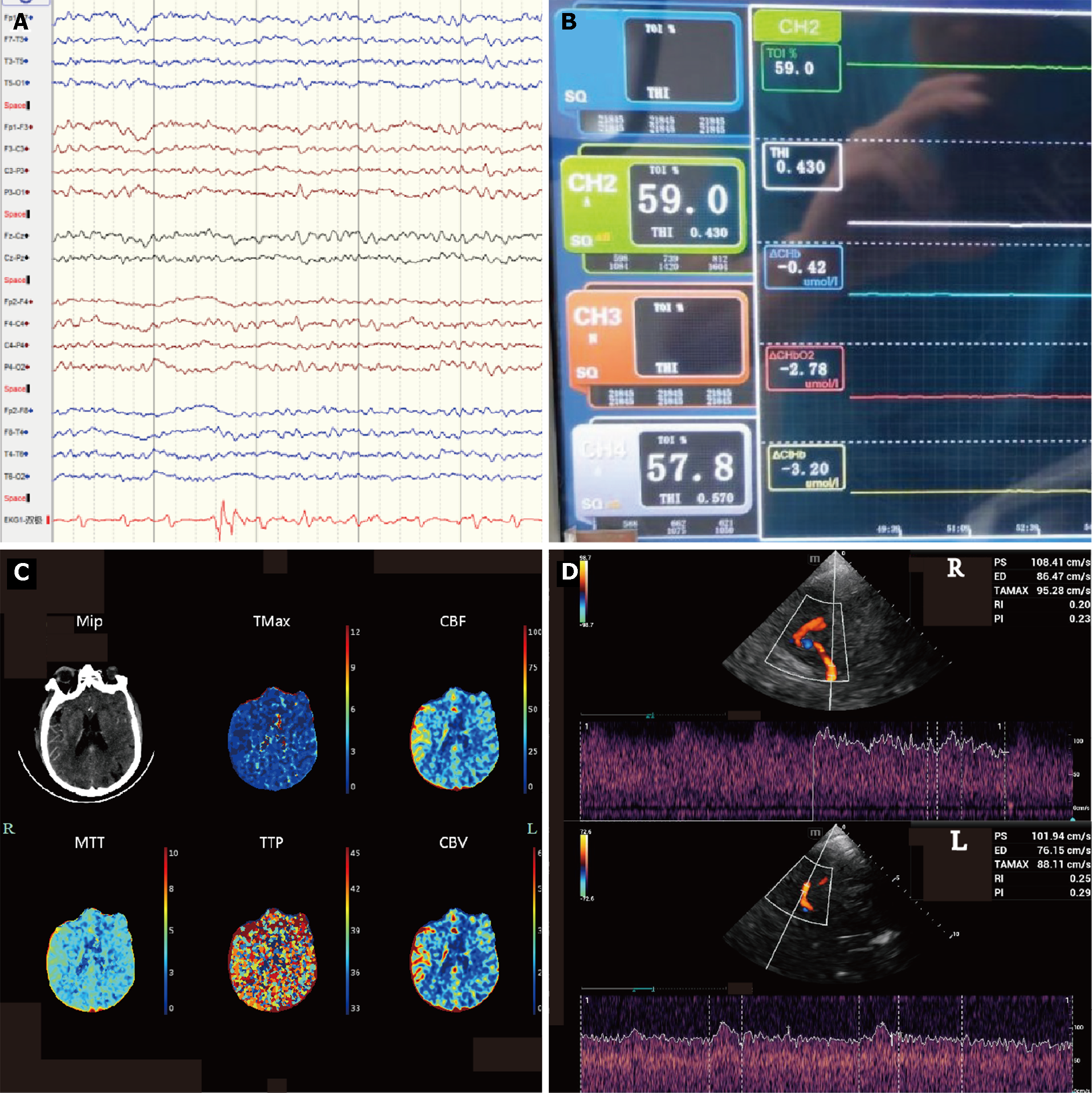Copyright
©The Author(s) 2024.
World J Clin Cases. Jun 16, 2024; 12(17): 3130-3137
Published online Jun 16, 2024. doi: 10.12998/wjcc.v12.i17.3130
Published online Jun 16, 2024. doi: 10.12998/wjcc.v12.i17.3130
Figure 2 To identify cerebral pseudoinfarction, we used other tests for validation.
A: Continuous electroencephalogram showing no significant abnormality of the bilateral cerebral cortex; B: Near-infrared spectroscopy indicating no significant change in the oxygen value on both sides of the brain tissue. CH2 (left forehead): The value is 59.0%. CH4 (right forehead): the value is 57.8%; C: Computed tomography perfusion (CTP) (repeated) image showing that the perfusion of both cerebral hemispheres and the cerebellum on both sides was symmetrical. After a decrease of extracorporeal membrane oxygenation flow to 2 L/min, the CTP was reviewed again; D: Bedside transcranial Doppler images indicating pulsatile flow in the right middle cerebral artery and advection in the left middle cerebral artery with similar flow rates. The left middle cerebral artery exhibited advection, with a peak systolic (PS) velocity of 101.94 cm/s, end-diastolic (ED) velocity of 76.15 cm/s, time average maximum velocity (TAMAX) velocity of 88.11 cm/s, resistive index (RI) of 0.25, and pulsative index (PI) of 0.29. The right middle cerebral artery demonstrated beat flow, with PS at 108.41 cm/s, ED at 86.47 cm/s, TAMAX at 95.28 cm/s, RI at 0.20, and PI at 0.23.
- Citation: Xu M, Yan JY, Jin JJ, Li T. Cerebral pseudoinfarction due to venoarterial extracorporeal membrane oxygenation: A case report. World J Clin Cases 2024; 12(17): 3130-3137
- URL: https://www.wjgnet.com/2307-8960/full/v12/i17/3130.htm
- DOI: https://dx.doi.org/10.12998/wjcc.v12.i17.3130









